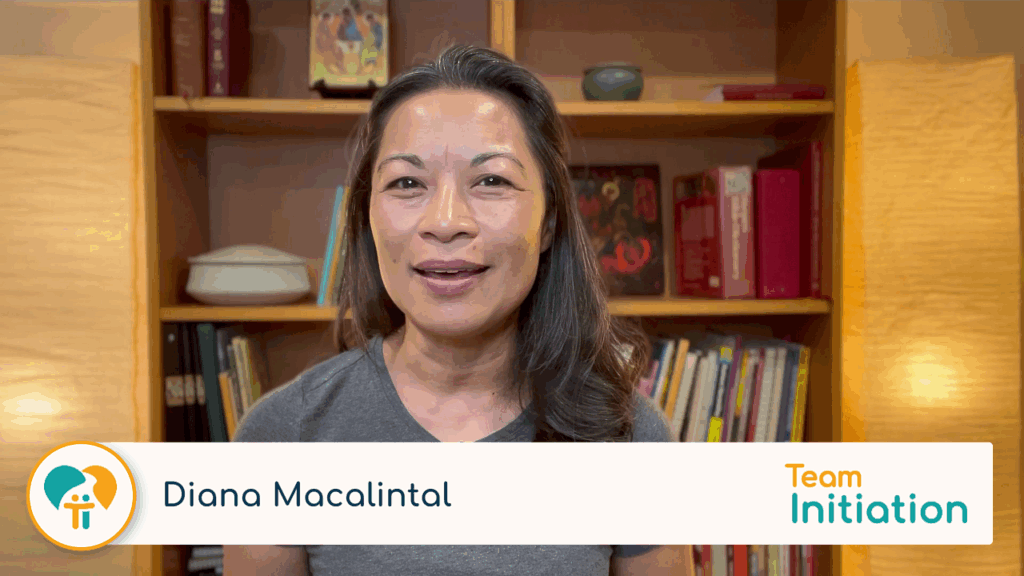![stinson50 by ChazWags [via Flickr]; Tagged as ongoing stinson50](http://farm2.static.flickr.com/1059/1316625087_bfda0b7794_m.jpg) Here is a pop quiz. Catechumen A is traveling at 90 mph on a train from St. Louis to Chicago. Meanwhile, Catechumen B is traveling by bicycle from Seattle to Miami. Supposing each catechumen participates in the liturgy of the word every Sunday for the duration of their respective trips, which catechumen will reach conversion first?
Here is a pop quiz. Catechumen A is traveling at 90 mph on a train from St. Louis to Chicago. Meanwhile, Catechumen B is traveling by bicycle from Seattle to Miami. Supposing each catechumen participates in the liturgy of the word every Sunday for the duration of their respective trips, which catechumen will reach conversion first?
Answer: Catechumen B will reach conversion first.
(Show your work: Catechumen B had cycled through the Sundays of the liturgical year, which is the primary encounter with the Mystery of Christ; Catechumen A had many fewer, if any, encounters with the Mystery of Christ.)
How many catechists do we need?
Okay, it’s a silly example, but it has a serious point. An abbreviated RCIA program does not provide the complete conversion process required of the catechumens. Of course, everyone agrees with that, don’t we? Most of us know that a complete catechumenate process—one that extends through the entire liturgical year—is going to provide a deeper experience of conversion for the catechumens. So what’s stopping us from providing catechumens with the fullest possible encounter with the Mystery of Christ?
There are several roadblocks, and the one I hear about most often is a lack of catechists. If a parish is currently barely able to offer weekly catechetical sessions in an abridged RCIA program, it is difficult to imagine expanding to a complete catechumenate process that spans 52 weeks of the year. In most of our parishes, we just don’t have enough catechists to provide an ongoing process, do we?
Well, in fact, we do. How many catechists does it take to provide an ongoing catechumenate? Count up the number of catechists you have on your team right now. That’s how many it takes. If that’s you and you alone, that’s how many it takes.
Let’s look at how you can expand your current, condensed RCIA program into a complete, ongoing catechumenate process with only the team members you have now.
Rescheduling conversion
For a small team, moving to a full and complete catechumenate process and providing weekly catechetical sessions for 52 weeks of the year seems overwhelming. So let’s start by agreeing that for this first year, we aren’t going to add any more catechetical sessions beyond what the parish is currently offering. However, we’re going to spread them out over all the seasons of the liturgical year.
Let’s imagine your Rite of Acceptance is scheduled for the first Sunday in October and you plan to meet weekly with the catechumens after that. So that’s four sessions in October. There are five Sundays in November in 2008, but you probably aren’t meeting Thanksgiving week. Nor Christmas week in December nor New Year’s Week in January. So that means, between October 5 and Ash Wednesday (which falls on February 25 in 2009), you might have 18 catechetical sessions with the catechumens.
If you changed that schedule from meeting once a week to meeting once a month, with weekly spiritual gatherings in Lent for the elect, you would still be meeting the same number of times and “covering” the same amount of material.
Cycling through the liturgical year
Just because you are not meeting for weekly sessions does not mean you will not be interacting with the catechumens, however. They will still be participating in the liturgy of the word every Sunday with their sponsors and the rest of the parish. And they will be attending parish events and meeting lots of parishioners—your primary team member.
Most importantly, like Catechumen B in our word problem, your catechumens will be cycling through the entire Mystery of Christ as it unfolds during the liturgical year.
Lack of catechists is just one of the obstacles to a full and complete catechumenate. What are some others you’ve encountered? If you’ve overcome an obstacle, how did you do it?
See also these related articles:


















Interestingly, one of the problems with which we’re contending is not so much a lack in catechists but a consistency in catechists (possibly from having too many). We use a year-round catechumenate that meets every Sunday of the year. For each Sunday we have two catechists, one for exegesis and the other for extended catechesis. We have 8-9 catechists on the team and we sign up for exegesis and extended catechesis slots as we can.
One of the difficulties with this (and a difficulty I find inherent in the year-round catechumenate) is the ‘gelling’ of the group. Since the catechists may not sign up too frequently and since the individuals participants at each Sunday dismissal may be different, each session can feel like ‘breaking the ice.’ I have tried to get a ‘bridge,’ such that the extended catechist (second half) this week is the exegete (first half) the subsequent week, but this doesn’t always work. One suggestion that emerged from our team meeting last night was to have pairs of catechists sign up for three months at a time and commit to that–and only that–time period.
As I said, inherent in the year-round catechumenal model is a difficulty in creating a coherent sense of community which was one of the aspects of the catechumenate reported by participants to be the most important in their faith journey (see Journey to the Fullness of Life, USCCB 2000). This is not reason to fear using the year-round catechumenate but it does require some creative thinking as to how to create a space where those who have just begun their formation, those who have been in the catechumenate for some time (remember that the USCCB asks catechumens to spend at least one liturgical year in the catechumenate proper), and others who may come and go can all be comfortable sharing their experiences and relating them to the shared faith. I certainly do not have the answer but suspect that having fewer committed catechists may help.
One of the other obstacles we have needed to overcome in transitioning to a year-round catechumenate are the “highs” that come with finishing. Certainly those who are preparing for baptism experience a high at the Easter Vigil, the subsequent party that goes on for hours in our narthex, and the excitement that others share with them. For those preparing for reception into the full communion, however, it is harder to generate the feel of a celebration. What I have done that has helped is to throw a party each time we have a Rite of Reception and to invite not only those newly received, but all those with whom I have had contact through the catechumenate–sponsors, those still coming to inquiry, catechumens, newly received, those received ages ago, etc. This seems to have worked well to show how much the Church welcomes them. It is a challenge, however, to host such festivities three or four times a year, as asked of us who have not only adopted a year round catechumenate but also those of us who take seriously the distinctive needs of the already baptized.
I would agree with Andrew that a smaller group of catechists may be better for the sake of consistency with a group. I had a similar experience with a small group of catecheists who met with our catechumenate once every fourth week. Even they felt somewhat removed from the individuals in the group.
Perhaps a solution with too many catechists (isn’t that a wonderful problem?), especially with a sense of people coming in and out of the RCIA (i.e. candidates for full communion)is to create a two or three tier process. Maybe it makes sense to have two separate catechumenates going on simultaneously where one group will be initiated this Easter and the other the next Easter. The third group would be just for candidates for full communion. In this scenario you could take your large number of catechists, break them down into smaller teams and intersperss them between the three groups.
Also, we should understand that the National Statutes approved in 1986 by the U.S. Bishops are particular law for the dioceses of the United States. They really are not a suggestion about the length of time for the catechumenate.